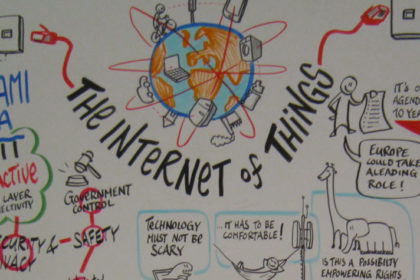
Before the holiday and the end of 2013, I had the distinct honor of joining dozens of San Antonio CEOs and Texas CEO Magazine in spending an hour with Smart Grid Pioneer and author of The Advanced Smart Grid, Andres Carvallo. Why you might ask; if you know me professionally, you know that energy and innovations in the grid aren’t exactly my forte. Weeks ago, I bore witness to one of the most profound discussions of The Internet of Things and a visionary explanation of what it will mean to businesses.
Article Highlights
What is The Internet of Things?
In the early days of the internet, long before people were concerned with privacy, photos revealing their party antics, and the persistence of an inappropriate tweet, we dreamed about the promise of omniscience. Imagine: the internet is one big database and therein is the potential to attain near sentience in knowing and automating your life. Seems a little troubling until you really realize the implications. One of the things that really bugs me about the internet, as an example, is that I rate movies on Amazon, Netflix, iTunes, Hulu, Facebook, and Flixter; independently of one another. In each experience, I rate movies to enhance my experience therein from that point on; to get recommendations, customization, etc. Why do I have to do it in a half dozen different places? The internet is one big database. And don’t conclude that the promise is that we should be able to simply rate once and be done: your experience on dating sites, events, with book recommendations, etc. would all be transformed because everything is connected. Knowing you like Batman and not Superman (god forbid) is a data point that correlates with your taste in so much more.
But that promise was never realized. The media grabbed hold of privacy concerns and tracking issues while businesses put up walled gardens, the likes of AOL, in which they could control, monetize, and leverage data about ourselves for their own purpose and profit. We got scared and the corporation got greedy.
Still, that idea, the promise, helps understand what’s possible when it comes to The Internet of Things.
Your fridge will tell you when to buy milk
Just as smartphones have forever connected you to the internet, increasingly every technology with a heartbeat has the same connection. And not just the obvious connections like that which you’re already experiencing with your TV, home audio, or even your car… your garage door, the windows, your glasses, dishwasher, swim goggles, football helmets, and certainly your thermostat are all being connected.
And built on that promise of the internet, those devices can know what the internet knows, track what the internet tracks, analyze with the power of big data, and enrich. That enrichment is the key; just as we dreamed of a day when the internet itself knew all of those things, imagine what the world will be like when just about everything we do, in life, knows. Imagine the implications in business.
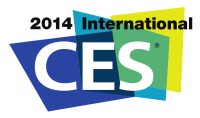 Troubling, is that the reaction to this is not unlike that which we experienced with the internet. At CES this year, Maureen Ohlhausen, commissioner of the Federal Trade Commission, warned, “Because interconnected devices collect and share large amounts of information, the tech industry must be sensitive. It’s crucial that companies act to safeguard the privacy of users in order not to give it a bad name.” Sounds like a slippery slope doesn’t it? Robert Pepper, VP of Global Technology Policy at Cisco, which reports that 25 billion devices will be connected to the Internet by next year, is pragmatic but prudent, “You have to bake in privacy and security from the beginning. When you have big data it requires big judgment. We have to think about building it in to give consumer the choice, control, and transparency.” Yet Bloomberg asks if The Internet of Things isn’t going to result in a “Horror Show.”
Troubling, is that the reaction to this is not unlike that which we experienced with the internet. At CES this year, Maureen Ohlhausen, commissioner of the Federal Trade Commission, warned, “Because interconnected devices collect and share large amounts of information, the tech industry must be sensitive. It’s crucial that companies act to safeguard the privacy of users in order not to give it a bad name.” Sounds like a slippery slope doesn’t it? Robert Pepper, VP of Global Technology Policy at Cisco, which reports that 25 billion devices will be connected to the Internet by next year, is pragmatic but prudent, “You have to bake in privacy and security from the beginning. When you have big data it requires big judgment. We have to think about building it in to give consumer the choice, control, and transparency.” Yet Bloomberg asks if The Internet of Things isn’t going to result in a “Horror Show.”
What was truly remarkable about Carvallo’s talk in San Antonio was not the future of The Internet of Things but in painting an strikingly similar technical picture of what I like to paint with regard to the future of marketing: that with all things connected, business has forever changed.
The light bulb going off
Andres Carvallo was a founder of Austin Energy so far more than being one of the industry’s foremost on our energy grid and the future of the smartgrid, he knows power and what’s involved in fostering efficiency therein.
“Smarter enterprise is the nonstop, on-demand redesign journey of the business models, processes, technologies, org structure, and applied human capital,” shared Carvallo during his talk, “to seamlessly blend existing and new standalone silo trends related to IoT into a more profitable business.”
Steven Collier, Vice President of Business Development at Milsoft Utility Solutions, shared last year in exploring the significance of technology in public power consumption, with Public Power Magazine and Hometown Connections, “Increasing complexities of operating a public power system in the 21st century require new solutions. New and emerging technologies can vastly improve economy, efficiency, productivity, reliability, sustainability and customer service. The benefits of these new technologies can far outweigh the costs, but it is crucial that you have a comprehensive technology integration plan in place that is based on open systems sharing data across multiple platforms from a variety of vendors. Only this will enable your utility to obtain the maximum benefits of each solution. In fact, it will amplify the total benefit, achieving a whole that is greater than the sum of the parts.”
 While CES has been full of exciting innovations and hesitant reservation about the interconnectedness of everything, the light bulb shines. “There’s a nice symmetry in smart light bulbs blazing the trail for the Internet of Things,” shares the Houston Chronicle’s Benny Evangelista. “When electric wires first appeared in homes in the early 20th century, the sole purpose was electric light. But inventors soon found other ways to use that wiring, giving rise to electric appliances like irons and vacuum cleaners.”
While CES has been full of exciting innovations and hesitant reservation about the interconnectedness of everything, the light bulb shines. “There’s a nice symmetry in smart light bulbs blazing the trail for the Internet of Things,” shares the Houston Chronicle’s Benny Evangelista. “When electric wires first appeared in homes in the early 20th century, the sole purpose was electric light. But inventors soon found other ways to use that wiring, giving rise to electric appliances like irons and vacuum cleaners.”
The light bulb went off for me in seeing the correlations between Andres’ talk, from the perspective of the technology and the CIO, with my own: when it comes to raising money, marketing, or understanding the role of search engines and big data in your organization, the bottom line is unequivocally that it’s all connected, and executives that hope to win, must think about the implications of everything, on everything.
“We can go everywhere from here,” Brian Bedrosian, senior director of wireless connectivity for Broadcom, shared with Evangelista. “There’s nothing that can’t be connected and there’s nothing that you can’t find some very simple use for to make it more pleasurable or make it an easier way of living your life.”
And your business
What the Internet and its Things Mean for Business
We talk a lot about Growth Hacking here and Steven Collier’s characterization of The Internet of Things, in discussing the implications in the power industry, is the very definition of growth hacking a business with a singular focus on growth; to paraphrase: Leveraging new and emerging technologies that vastly improve economy, efficiency, productivity, reliability, sustainability and customer service. The benefits of these new technologies can far outweigh the costs, but it is crucial that you have a comprehensive technology integration plan in place that is based on open systems sharing data across multiple platforms from a variety of vendors. Whoa.
Andres pointed out that promise of The Internet of Things, applied to the administration of your business, will transform business through:
- A smarter playbook
- Knowing your customer
- Leveraging social media
- Unleashing mobility
- Accelerating collaboration – embrace frememies
- Using analysis dashboards
- Embracing the cloud
- Automating everything possible
- Empowering employees and sharpening skills
Imagine, marketers, sitting in a room with CEOs, CTOs, and CIOs, listening to one of the leading technologists, the very type of individual with whom we’re constantly trying to explain (justify) how marketing really works these days, draw a correlation from The Internet of Things, to connected technologies, to that transformation of business. I was blown away. And in seeing that connection, between tech and marketing, between innovation and growth, I was reminded of Peter Drucker who said that the only things that matter in business are innovation and marketing; and here in this room in San Antonio, I witnessed it come together – not as the internet of things, but in our future with the internet of everything.

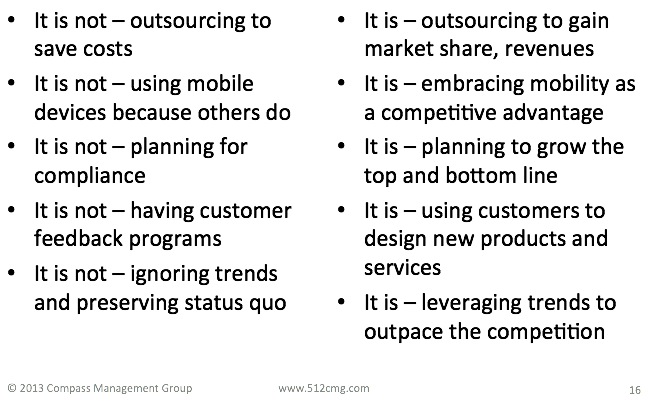
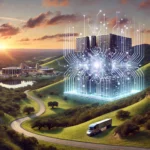
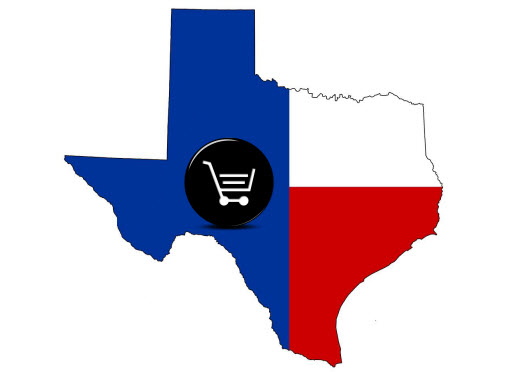

From a entrepreneurial perspective, the Internet of Things is quiet at the beginning of the S-curve. There is lots of opportunity, but also nobody knows what will catch on. Though nobody has to be afraid of competition as there is enough share for everybody in a growing market.
From an Engineering standpoint, all major problems have been solved: we solved power, spectrum, miniaturization, component cost, and network scalability. We also have blueprint designs and highly integrated components.
But the big holdback will be the cost of entry. It cost about $100k at a minimum to prototype an embedded system. We are talking $250k-500k until industrial scale, for even very small gadgets. This is much less than the seven figures from 10 years back, but still a lot of out-of-pocket money – and much of it before any third party investments, crowdsourced or traditional, pours in.
In addition there is a labor shortage of circuit designers. In a recent study that I had done for a project, I found it extremely difficult to find engineering firms who could design circuit boards in the US and Europe. Most engineering firms are huge and make “outsourcing” money but are not skilled in effective rapid prototyping of the kind a startup can afford. On the other hand, a lot of academics are too narrowly focused, increasing organization size and development cost and time. Of course, if the Internet of Things catches on, the labor market will change. What we need are all-around embedded designers who are up-to-date on new chips and modules, and understand to interface with OS and APIs of open source software, as well are able to port to an embedded system.
Thanks for sending this to me. Nice article.
I did a presentation at CES in Vegas last week for the IEEE ICCE on the convergence of the new, decentralized, edge-powered grid with the Internet of Things. I will also be addressing this topic in an upcoming, two-part series for Utility Horizons.
I don’t think that what Bob Metcalfe calls “the Enernet” will result from a concerted electric utility R&D project. It won’t be an evolution of the monolithic, centralized electric grid. It will be an explosive, revolutionary change that rivals the Internet. In fact, it will be enabled by the Internet. More than 300 million people and 20 million businesses, all served through about 200 million electric meters will increasingly produce, store, utilize, manage their energy . . . they will eventually by and sell it in transactive energy markets . . . creating virtual power plants via the cloud. And, it will be done just like everything that we do – work, play, education, entertainment, learning, commerce is increasingly done via apps on some 7+ million mobile communications devices worldwide. The legacy players in every industry will either adapt to this “open,” IP based structure or perish. The singularity is near for the electric utility industry, emanating from billions of distributed, stochastic, consumer-owned, M2M controlled endpoints.
In this context, think hard on what it means when Google buys NEST!
Here are a few quotes from Bob Metcalfe (https://engineering.tufts.edu/docs/DeansLecture_Metcalfe-Enernet_10-2-25.pdf)
“Over the past 63 years, we met world needs for cheap and clean INFORMATION by building the INTERNET. Over the next 63 years, we will meet world needs for cheap and clean ENERGY by building the ENERNET.”
“The Smart Grid should use the Internet as its control plane, above its power plane,and not just an Internet, THE Internet.”
“The pre-Internet telecommunications grid was synchronous and storageless.
The Internet is asynchronous and has all kinds of storage. Ethernet has its clock in each
packet. Imps had core.
The Dumb Grid is, yes, synchronous anbd storageless.
If the Internet is our guide: Desynchronize and storify the Smart Grid.”
“Like the Internet the Smart Grid needs to be distributed.”
“Not centrally generate power and then distribute it, but generate power in a distributed system.”
“Each hour, more sunlight arrives at Earth than Mankind uses in a year.
And 99% of Earth’s living space is in the oceans.
Energy solutions will likely emerge from the sky and oceans.”
“Enernet energy is more likely to be
EXCHANGED than distributed.
Distributed energy (in the Internet sense) means the grid become more peer-to-peer, more multi-vendor, with more standards,
more competition (FOCACA). The transmission of energy then become more networked, and more symmetrical, more among
than between. I want my home and car energy systems to be able to buy energy from power grids, but also to sell. Radios and
TVs are being replaced by PCs, which upload, not just download. Ditto nodes in energy grids.”
Just sayin’ . . .
Incredible evolution Steve. And it validates the epiphany I had listening to Andres: that it’s all coming together. Most amusing for me was that the talk I give, in San Antonio, is met with nods of foregone conclusion but a challenge grasping the technology; whereas here in Austin, where technology is more pervasive, the understanding of the marketing/business implications escape folks. On the other hand, Andres’ CIO talk is well met in Austin as a foregone conclusion while in SA, businesses scratch their head as to what to do technically. Point is, the internet is indeed not just the backbone but an incredible metaphor for what it will take to make this a reality: both innovation and marketing.
Steve, I have been involved in a few smartgrid projects over the years. I designed large portions of Calpine’s network about 15 years ago which was probably the first generator building a smartgrid. I have been involved in study with LCRA replacing microwave and powerline control networks with MPLS. I was also involved in a project about protecting MODBUS control traffic after 9/11.
There was a time that I was very much into smartgrid, even had a startup in this area, but got out of it as I was observing lots of talk but little action by generators. There is opportunity to catch up on two decades of progress. Would be nice if it would finally happen.
Today, I am focusing on building megadatacenters (> 10k hosts) which became the big thing recently.
Stefan, data centers have already been a significant influence on the development of the modern grid as they have found that service from the legacy grid is not adequately (choose one or more): economical, reliable, sustainable, user friendly. As a result, they are among the C&I customers that have installed their own generation as well as to deploy and operate their own quasi microgrids. They are also the most likely to innately grasp the concept of an enernet.
I agree with you that most of the new, self-proclaimed smart grid startups have not made that much of an impact so far. I don’t think that the development of the Enernet will be driven from the center by incumbent utilities or from the outside by startups. It will be driven from the edges by customers who choose alternatives to traditional all-requirements service from their local monopoly provider. They will do so because of the inadequacies of the grid listed above. The alternatives may be provided by established companies, startups, and even, in rare circumstances, their incumbent utility provider. However, entirely new business models are required. This is where startups can have an edge because, as Clayton Christensen pegged it in his books, established companies have such a hard time adopting new business models.
Yes, you are right that the driver will be the consumer and not the dinosaurs. Btw, I had started a company developing the first actual smart meter. Smart meters today are dumb meters with a digital read out. We wanted to add logic on top of that, partly borrowed from IDS concepts in the IP network.
On the utility side new devices will come from speciality shops who have tight connections into the vertical. I had worked a big vendor on an L7 all integrated hardened device, but we got no takers. In the end it got adopted by the defense sector instead.
Opportunities are in the consumer space and small alternative generation space. Nest is a very good example.
Stefan,
You are so very right about what are being called “smart” meters. The preponderance of them are at best glorified electronic versions of the century old electromechanical ones except that they can be read remotely and more often. The “really advanced” ones can store and forward interval data and a few may even be able to detect and report power off/on and voltage (but not that accurately). Most of them still use isolated, proprietary, low bandwidth, high latency telecommunications networks and proprietary, closed software systems that do not integrate or interoperate among vendors, sometime not even among different generations of product from the same vendor.
It seems to me that anything in the 21st century that is called “smart” must live up to a much higher standard. I think that standard is set by smart mobile communications devices, not something that is just being marginally more versatile than a piece of rotating equipment.
If you’ll allow me a bit of a riff, I’ll take issue with your claim of being first to bring a truly smart meter to market. I was CEO of a smart metering company, Util-LINK LLC, in Nashville in the late 90s which offered a truly smart meter for rural electric cooperatives for whom meter reading was especially difficult and expensive. It was fully electronic (DSP based), not an electronic counter of the rotating mechanical disk. It could not only measure, record and forward interval kWh data, it could be set on real-time monitor mode and provide a continuous measure of KW and KWh. It could do the same for real-time and interval:
(1) voltage
(2) current
(3) power factor
(4) power on/off both momentary (blinks) and longer duration, even reporting (via super-cap) after the power was off
(5) meter tamper (remove, replace, reverse)
(6) ambient and meter base temperature
(7) input, both digital and analog, from external sensors
The LINK could be remotely programmed while installed in the field to measure, record and report at selectable intervals and could report by either responding to a “ping” or transmitting at remotely programmable scheduled times. It could be similarly programmed while installed in the field to detect, record and report hi / lo over selectable time intervals. It could monitor and control properly fitted appliances (PLC) inside the home or business.
Most importantly, its functions were not only remotely selectable / programmable, the firmware could be updated remotely in the field without a utility employee having to visit the site.
So why isn’t the LINK the industry standard today?
First, most utilities didn’t need or want that much information, they just wanted to render a monthly bill more cheaply, accurately, reliably and speedily. The meter was considerably more expensive than the traditional electromechanical meter to purchase and install, and so the economic payback period was long.
Second, to deal with the difficulties of telecommunications in rural areas, the LINK was designed to use the nearly ubiquitous public telephone (via DTMF tones because rural phone lines simply could not handle higher frequency modem signals) to communicate. There were severe problems with: (1) connecting a well grounded, low voltage, DC telephone system with a poorly grounded, high voltage, AC power system, especially during lightning storms or switching surges, (2) none of the rural telephone systems operated anywhere near industry standards with regard to on-hook / off-hook voltage so it was impossible to reliably detect when the occupant was using the phone and not impose DTMF tones at that time, (3) as you can imagine, some consumers were concerned about privacy issues when their phone lines were being used.
Put all of the above with the typical design and performance issues for an altogether new device and the company ran out of third party financing before achieving commercial success (with some 300,000 meters installed). The key point of all of this is that the LINK experience was almost 30 years ago and most of today’s “smart” meters don’t come near the LINK’s level of functionality. And nearly none of today’s meters yet take advantage of public networks to improve economics, reliability, security, versatility. All of which is to support your premise . . . the industry’s primary approach to smart grid has been consumer demand response facilitated by smart (not!) meters. Meanwhile, the Internet of things is connecting up the Grid Edge at light speed. I can do as much or more with a publicly available plug ready Modlet and my iPhone than any electric utility smart meter on the market today.